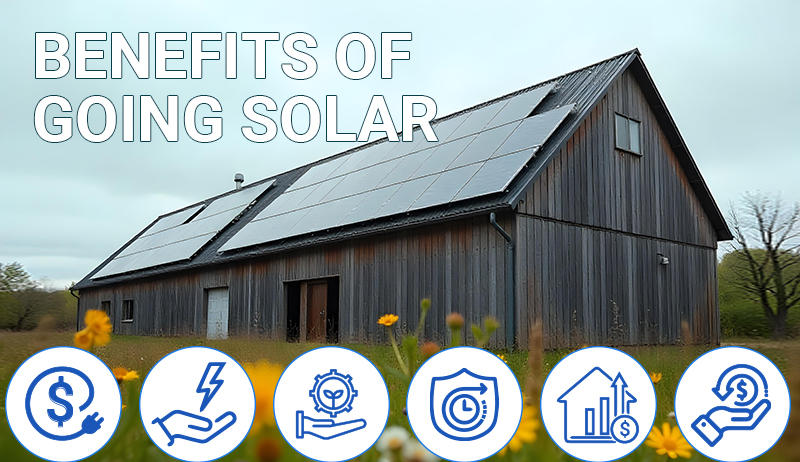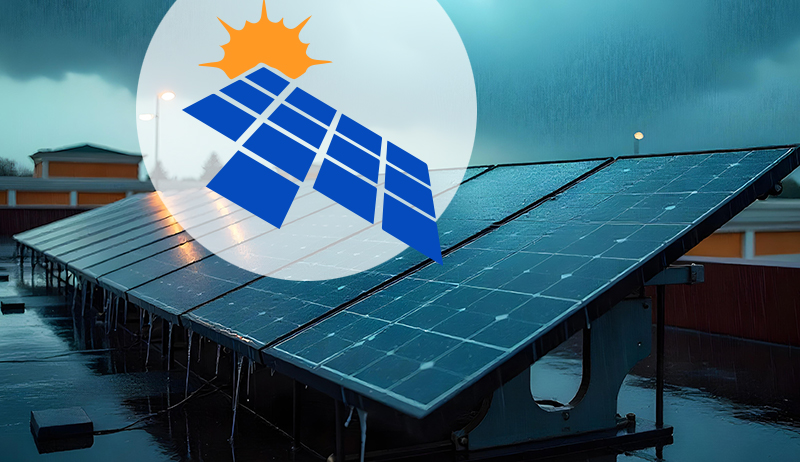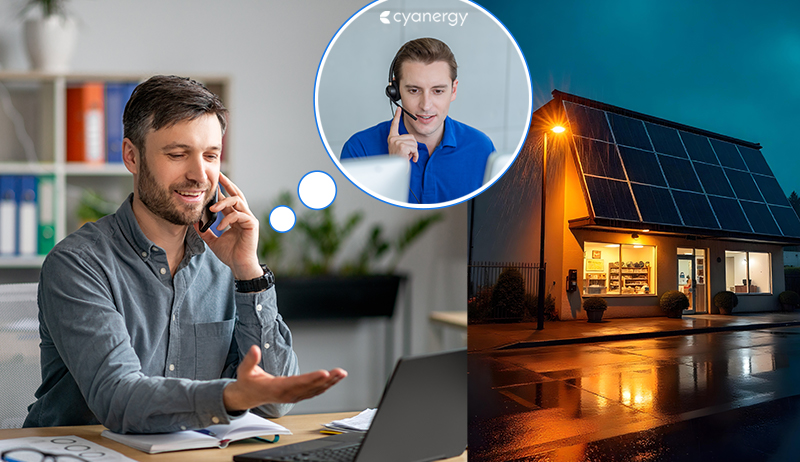Weather Guard Lightning Tech

Denmark Supports Vestas’ Australian Project, TPI Sells Auto Business, Nabrawind and LiftWerx Receive Investment
TPI Composites sells its automotive business, Fortescue invests in Nabrawind’s innovative wind turbine technology, LiftWerx receives a majority equity investment from TowerBrook Capital Partners, and Denmark’s Export and Investment Fund supports Vestas’ involvement in Australia’s Golden Plains Wind Farm.
Sign up now for Uptime Tech News, our weekly email update on all things wind technology. This episode is sponsored by Weather Guard Lightning Tech. Learn more about Weather Guard’s StrikeTape Wind Turbine LPS retrofit. Follow the show on Facebook, YouTube, Twitter, Linkedin and visit Weather Guard on the web. And subscribe to Rosemary Barnes’ YouTube channel here. Have a question we can answer on the show? Email us!
Pardalote Consulting – https://www.pardaloteconsulting.com
Weather Guard Lightning Tech – www.weatherguardwind.com
Intelstor – https://www.intelstor.com
Allen Hall: I’m Allen Hall, president of Weather Guard Lightning Tech, and I’m here with the founder and CEO of IntelStor, Phil Totaro, and the chief commercial officer of Weather Guard, Joel Saxum, and this is your NewsFlash. Newsflash is brought to you by our friends at IntelStor. If you want market intelligence that generates revenue, then book a demonstration of IntelStor at intelstor.com.
TPI Composites has decided to sell its automotive business unit to investment firm, Clear Creek Investments. This divestiture aligns with TPI’s strategy to focus on its core wind energy business. The sale is expected to improve TPI’s monthly cash flow by about 1. 7 million over the remainder of 2024.
TPI composites accounted for around 33 percent of all onshore wind blades on a megawatt basis globally, excluding China. Now, Phil, it does seem like wind energy companies that have been dabbling in associated industries are trying to get back out of them.
Philip Totaro: To a certain extent, yes. It’s, it’s interesting because we go through these periods where companies like to be able to vertically integrate in any one industry vertical or, or potentially dabble in, in others.
But the timing of this is interesting in the context of. TPI wants to be able to strengthen their position and their relationship with GE, who obviously is going through, some tumult with LM wind power as they kind of right size that, that company. TPI doesn’t want to lose GE’s business because they’re, quite highly dependent on it.
And with the rise of kind of Chinese wind turbine manufacture, blade manufacturers, they have increased competition. In the world for blade manufacturing that they didn’t have, even going back a few years, so divesting the automotive business segment is fascinating that it’s going to leave them to focus on the core wind energy segment.
It hasn’t been, the best of times for them recently, but hopefully this allows them to continue. Growing their, their footprint in within the industry and throughout the rest of the world.
Joel Saxum: I see this as a gamble, right? Because a lot of times if you are very dependent on one revenue stream, i.
e. TPI, building blades, If you have another, and that building with that being tumultuous, right? There’s contracts come up, they come down, there’s TPI, there’s blade issues, you gotta have warranty claims, all these different things. So that’s a pretty, kind of a risky business model. If you have another thing it’s just like diversifying your portfolio, right?
If you have another entity or another silo that makes money, Or is, is doing decent and supporting, I think, I would think you’d keep it at this point in time to be able to kind of like flatten out your revenues. Now, if you’re a company that’s a a large entity where you’re like a, and I’m, I know they’re connected business wise, but I’m saying just GE as example where aerospace and health and all these different things.
Yeah, at that point in time, it makes sense to silo off some things and focus in. But if it’s TPI and you’re just doing blades and then a little bit of automotive, I would think you’d keep it to be able to kind of, bolster your revenue base, but going a different direction. There’s going switching to just blade.
Philip Totaro: So, and keep in mind, this could be because they’re pursuing a deal with somebody and the deal they’re pursuing somebody saying, get rid of this automotive business because we don’t want it. If we’re going to acquire you or otherwise partner with you. So that could be driving it as well.
Allen Hall: Australian mining and green energy company Fortescue has made an additional equity investment into Spanish wind turbine innovator Nabrawind.
The investment aims to accelerate the commercialization of Nabrawind’s innovative products such as modular blades craneless blade installation systems and self erecting towers and the partnership between Fortescue and Nabrawind, which began in 2023, focuses on addressing challenges in onshore wind installations related to logistics and project delays.
Now, Phil, we have seen a number of concepts and early adaptations of turbine erecting equipment. Why is Fortescue investing in Nabrawind at this point and where does that push Nabrawind?
Philip Totaro: Hmm. Yeah, this is a really interesting kind of evolution of Nabrawind’s journey so far. Thank you. Whereas they’ve been regionally focused in Spain and, and also North Africa recently with some of the demonstrations that they’ve done.
This really, they, they’ve also worked a little bit in China with some companies to try and bolster their position there. Through some technology and IP licensing, but the reason why Fortescue wants this now is Fortescue’s different business units, including Squadron Energy Wind Lab which are kind of merging together they want to be able to develop projects in remote locations in Australia where they aren’t going to be able to truck components out there very conveniently.
And so having something that could do self erection on the tower and or the blades would be desirable. So that’s kind of the first bit, coupled with the fact that Forescue is building some of these mega projects that are, 10 gigawatts, 20, 30 gigawatts in size, and they want to use, megawatt onshore wind turbines.
And so with that in mind as well, they want to have technology that’s going to allow them to be able to do that. You, if you know anything about the logistics kind of situation for the existing. tower manufacturers in Australia, they can’t get a lot of their towers trucked to the places where they need to go because they just don’t have the physical infrastructure in Australia to be able to do it.
So having, this kind of self erecting technology comes in handy in, in that use case. Now that said this is pretty much it. Putting a lot of eggs in, in one basket at this point with a technology that’s, gone through. I mean, it’s been in development for almost 10 years now and it’s gone through a fair amount of, of technological diligence and whatnot.
But it hasn’t actually really been. Kind of deployed at scale yet. So we have yet to see whether or not this is going to be a useful capability or not to me.
Joel Saxum: This one is reminiscent of the oil business. Okay. So when oil companies, oil majors, specifically ones with really deep pockets, see the need for technology, whether it’s an offshore platform, subsea drilling, like the really difficult stuff.
They invest in and or provide capital to smaller innovation and technology groups to develop it for them simply because building, doing that stuff internally is very tough, right? If you’re a, let’s take it for example, if you’re a Chevron, it’s a lot harder to build up an innovation department with a bunch of smart engineers and fund it and do all this stuff rather than an engineering group coming to the team and saying, Hey, we have a need for.
Product XYZ, find us someone to build it, and then someone might have a sponsor, and they grab the cash, they give it to them, they build it, and they deliver it to them. That’s a model that’s used in the oil and gas business regularly, and this is reminiscent of it. The guys, the Squadron Energy team that’s gonna build, wants to build all these massive wind farms in Western Australia, they see a need for some, some new technology and they’re not going to develop it themselves.
So they just grab the capital, give it to someone that will, and reap the benefits.
Allen Hall: Tower Brook Capital Partners has made a majority equity investment in Canada based LiftWerx. LiftWerx has developed proprietary up tower crane technology for turbine servicing. Their innovative solutions are seen as faster, cheaper, safer, and more environmentally friendly compared to existing alternatives.
This marks the third investment for Towerbrook’s impact strategy, Towerbrook Delta, launched last year. So LiftWerx has been making rapid improvements and getting out to a number of sites in Canada and the United States. We recently had them near a wind farm in Massachusetts near me. And it, the, the adaptation of that, the adoption rate of LiftWerx is astoundingly fast.
Which means they need cash, right, though?
Philip Totaro: Absolutely. And keep in mind, my understanding is that their kind of crane less or onboard crane technologies, avoiding the, the big crane callout, shall we say that lets you fix components up to about a three megawatt turbine size, I think? So they, what, what that facilitates is, as kind of average turbine sizes have, have grown and, and their technology is also gotten better, it’s seeing more widespread adoption because we, we know, from discussions we’ve had on the show before as well, that, Faults and failures are kind of increasing, particularly things that require either a large component swap out, like a blade or a gearbox, maybe an uptower converter or something.
And this kind of technology that avoids the cost of a big crane callout is absolutely desirable to have. So this is a fantastic deal and I’m, I’m actually pretty excited.
Joel Saxum: Yeah, there’s not a whole lot of innovations that come through the wind industry that are game changers. And to me, this is one of them.
There’s a couple other companies in this space. Lyftra is one of them. But LiftWerx is definitely growing, growing, growing fast. And of course, we all know they need to, if you’re going to scale quickly, especially with something capital intensive like heavy steel, because that’s basically what they are, right?
They’re heavy industries. They need the capital to get these things up and moving. And it takes smart people. I know there’s been a lot of people chasing lift works and it sounds like Tower Brook has made, made the move and got in the door, so congrats to them.
Allen Hall: Denmark’s Export and Investment Fund have provided 1.3 billion Danish crowns in export loans for the second stage of the Golden Plains Wind Farm in Victoria, Australia.
Vestas will supply turbines and handle construction service and maintenance for this stage. Which is owned by Portugal based tag energy. The project financed by the export and investment fund and a group of international banks is expected to generate enough clean power for over 750, 000 households upon completion in 2027.
All right, Phil. So the Danish government or export fund is providing the funding to Vestas, one of its local companies, to build a wind farm in Australia. That doesn’t happen much anymore. Can you explain how this happened in Australia?
Philip Totaro: Well, it’s, this is really interesting because this is a similar scenario to what a lot of these Western European companies are, are saying in regards to the Chinese.
Coming into Europe and bringing their own capital in this case. What this 1. 3 billion Danish crona that amounts to, I want to say a little over 187 million. U. S. dollars so it’s not, like they’re financing the whole project. Tag Energy is still, primarily responsible for this.
What this money goes for, though, is to help facilitate the Turbine fabrication and transportation to Australia for these components, which bolsters jobs in Denmark. So even though the project is being deployed in Australia, it’s still, helping out Denmark. It does, however, also help vestiges. Growth in their footprint in Australia, obviously with the, not only the project, but with a growing order book in Australia, did Vestas is actually looking at increasing factory space there for nacelle and drivetrain assembly. And tower production so this is something that, with these turbines for the Golden Plain site, they’re the six megawatt V 162s so Vestas wants to be able to domesticate some of that production eventually into Australia.
This is a first step into helping to facilitate that but it’s just interesting to me that this is also, again it’s fine when European companies or, European governments help out European companies, even if it’s helping them facilitate growth in a foreign country. But when the Chinese tried to do it in Western Europe, it’s the end of the universe and they have to have countervailing duties applied.
Joel Saxum: I think an interesting thing here is not so much on the economic side, Phil covered that, he’s a genius in that space, but the fact that Vestas is going to supply the turbines, handle construction, service, and maintenance for the stage of this wind farm. So it goes to kind of speak of how that, the, the wind industry is developing in Australia.
We’ve known for a long time that it’s heavy on OEMs, but they’re, they’re, in the past year, two years, there has been more and more. independent service providers over there. However, with this wind farm, it looks like Vestas is going to build the turbines. You do the logistics for the turbines, install the turbines, maintain the turbines and service the turbines which is an interesting strategy.
https://weatherguardwind.com/denmark-vestas-tpi-nabrawind-liftwerx/
Renewable Energy
Trump’s Agenda Is Even Far-Reaching Than People May Think
 As Trump’s former lawyer Ty Cobb says at left, in addition to turning the United Stated into an autocratic regime, at the same time, Trump needs to alter history such that future generations don’t think he did anything wrong.
As Trump’s former lawyer Ty Cobb says at left, in addition to turning the United Stated into an autocratic regime, at the same time, Trump needs to alter history such that future generations don’t think he did anything wrong.
Yes, he has his hands full, but he’s assisted by hundreds of traitors in congress, and hundreds of millions of hateful morons in the U.S. electorate.
Renewable Energy
Victoria’s VEU Scheme Introduces New Solar Incentives for C&I Properties
Renewable Energy
Does Evil “Destroy Itself?”
What Aristotle said here is interesting, especially since there has been so must of both evil and good through the millennia. The days since Aristotle have been marked by the Golden Age of Rome (Pax Romana), the Dark Ages, the Spanish Inquisition, the Rennaissance, the Enlightenment, the end of slavery, the slaughter of the Native Americans, the post-Emancipation oppression of Black Americans, the Holocaust, and so many more major historical events.
It seems we’re just about to see what happens to the evil represented by Trump’s second term in office. It seems that the United States has re-elected a man to the highest position on Earth whose only interests are punishing his enemies, enriching himself from public office, further consolidating his power, and keeping himself out of prison.
Will this evil destroy itself?
Again, we’ll have to wait and see.
-
Climate Change2 years ago
Spanish-language misinformation on renewable energy spreads online, report shows
-
Climate Change Videos2 years ago
The toxic gas flares fuelling Nigeria’s climate change – BBC News
-
Climate Change2 months ago
Guest post: Why China is still building new coal – and when it might stop
-

 Greenhouse Gases1 year ago
Greenhouse Gases1 year ago嘉宾来稿:满足中国增长的用电需求 光伏加储能“比新建煤电更实惠”
-

 Climate Change1 year ago
Climate Change1 year ago嘉宾来稿:满足中国增长的用电需求 光伏加储能“比新建煤电更实惠”
-
Greenhouse Gases2 months ago
Guest post: Why China is still building new coal – and when it might stop
-

 Carbon Footprint1 year ago
Carbon Footprint1 year agoUS SEC’s Climate Disclosure Rules Spur Renewed Interest in Carbon Credits
-
Renewable Energy3 months ago
US Grid Strain, Possible Allete Sale







